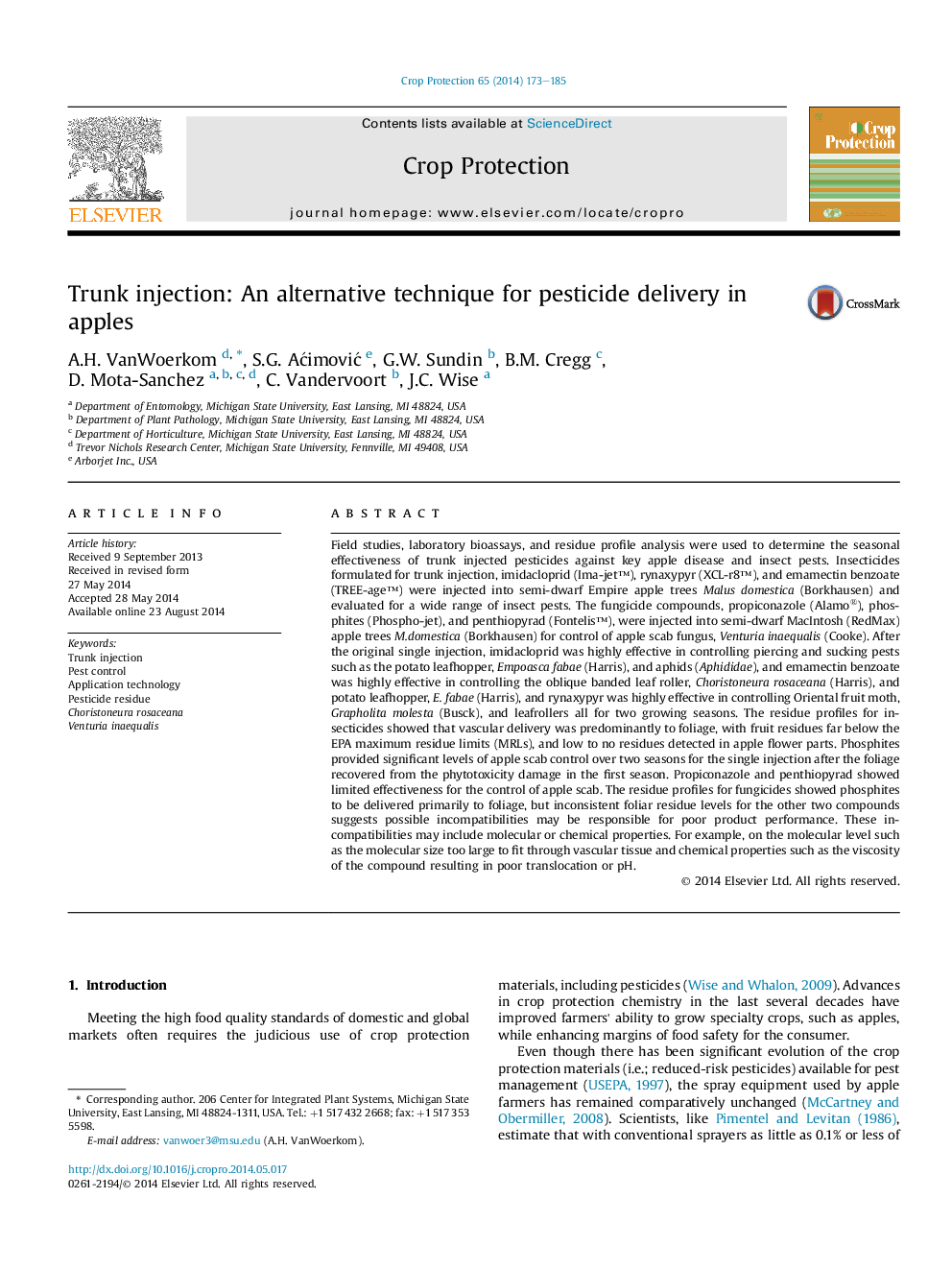| کد مقاله | کد نشریه | سال انتشار | مقاله انگلیسی | نسخه تمام متن |
|---|---|---|---|---|
| 4505822 | 1624322 | 2014 | 13 صفحه PDF | دانلود رایگان |
• A single insecticide injection may provide 2 seasons control of some pests.
• Fruit residues fall far below MRLs set by the US EPA for apples.
• Trunk injection may be superior delivery system providing enhanced insect exposure.
• Phosphites provided significant protection against apple scab for 2 seasons possibly inducing SAR.
Field studies, laboratory bioassays, and residue profile analysis were used to determine the seasonal effectiveness of trunk injected pesticides against key apple disease and insect pests. Insecticides formulated for trunk injection, imidacloprid (Ima-jet™), rynaxypyr (XCL-r8™), and emamectin benzoate (TREE-age™) were injected into semi-dwarf Empire apple trees Malus domestica (Borkhausen) and evaluated for a wide range of insect pests. The fungicide compounds, propiconazole (Alamo®), phosphites (Phospho-jet), and penthiopyrad (Fontelis™), were injected into semi-dwarf MacIntosh (RedMax) apple trees M.domestica (Borkhausen) for control of apple scab fungus, Venturia inaequalis (Cooke). After the original single injection, imidacloprid was highly effective in controlling piercing and sucking pests such as the potato leafhopper, Empoasca fabae (Harris), and aphids (Aphididae), and emamectin benzoate was highly effective in controlling the oblique banded leaf roller, Choristoneura rosaceana (Harris), and potato leafhopper, E. fabae (Harris), and rynaxypyr was highly effective in controlling Oriental fruit moth, Grapholita molesta (Busck), and leafrollers all for two growing seasons. The residue profiles for insecticides showed that vascular delivery was predominantly to foliage, with fruit residues far below the EPA maximum residue limits (MRLs), and low to no residues detected in apple flower parts. Phosphites provided significant levels of apple scab control over two seasons for the single injection after the foliage recovered from the phytotoxicity damage in the first season. Propiconazole and penthiopyrad showed limited effectiveness for the control of apple scab. The residue profiles for fungicides showed phosphites to be delivered primarily to foliage, but inconsistent foliar residue levels for the other two compounds suggests possible incompatibilities may be responsible for poor product performance. These incompatibilities may include molecular or chemical properties. For example, on the molecular level such as the molecular size too large to fit through vascular tissue and chemical properties such as the viscosity of the compound resulting in poor translocation or pH.
Journal: Crop Protection - Volume 65, November 2014, Pages 173–185
